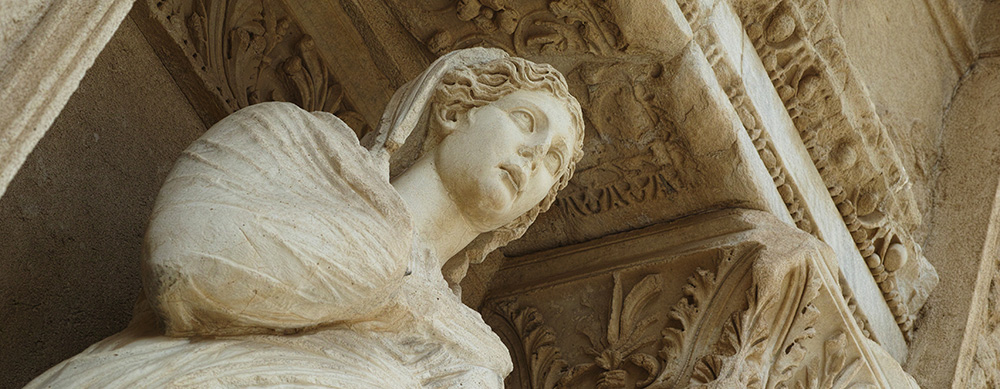Ancient Ephesus and the Terrace Houses
Description
Every step we take in Ancient Ephesus brings us
closer to the Hellenistic, Roman and early Christian
eras. We will enjoy a truly exceptional experience in
one of the most important and complete classical
cities in Europe, even though only a fraction of it has
been uncovered.
We pass through the Magnesian Gate and wander
through the Agora, Odeon, the magnificent and
restored Library of Celsus, the marble-paved Main
Street of Curetes, Baths of Scholastica, The Great
Theatre, Trajan’s Fountain, the Houses of the
Patricians, Prytaneum and the Temple of Hadrian.
Opposite Hadrian’s Temple, at the foot of the Bulbul
Hill and the covered part of the archaeological site,
protected from the heat and natural elements, lie the
Houses of Koressus or Terrace Houses.
It was here that the wealthy families of Ancient
Ephesus lived. These villas are excellently preserved,
especially the interior decor. The oldest houses so far
unearthed date from the 1st Century BC, were built on
two storeys and even had hot and cold and a heating
system, clay pipes under the floor. They were even
constructed to a city plan in which roads intersected
with each other at right angles.
Ephesus, which became the second largest city in the
Roman Empire, was dedicated to the goddess Artemis
and the magnificent temple built to honour her took 120 years to complete. It is one of six of the Seven
Wonders of the Ancient World that have long gone.
There will be time for souvenir shopping before we
return to the ship at Kusadasi.



